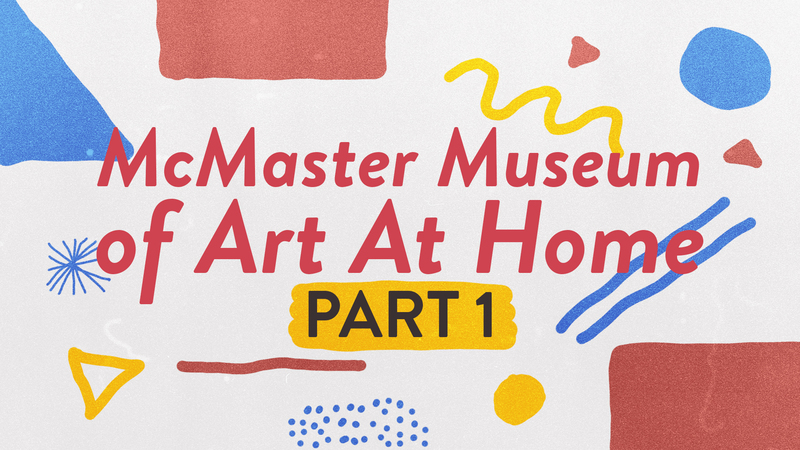MMA at Home: Part 1 - Animals Across Discipline, Time, and Space
This is a multi-part article about 2 different exhibits available online through the McMaster Museum of Art. Part 2 can be accessed through this page once it is published.
Over the course of this academic year, I have had the privilege of covering several exhibits at the McMaster Museum of Art. Due to the COVID-19 lockdown and the subsequent closure of the Museum, this has unfortunately come to a somewhat abrupt end.
However, one exhibit I covered recently, Animals Across Discipline, Time, and Space, has tentatively rescheduled its main event for Fall 2020 and is partially available online! This virtual “tour” of the exhibit includes photos, links to online content, and an exclusive interview with the curator. Who says you can’t experience art from home?
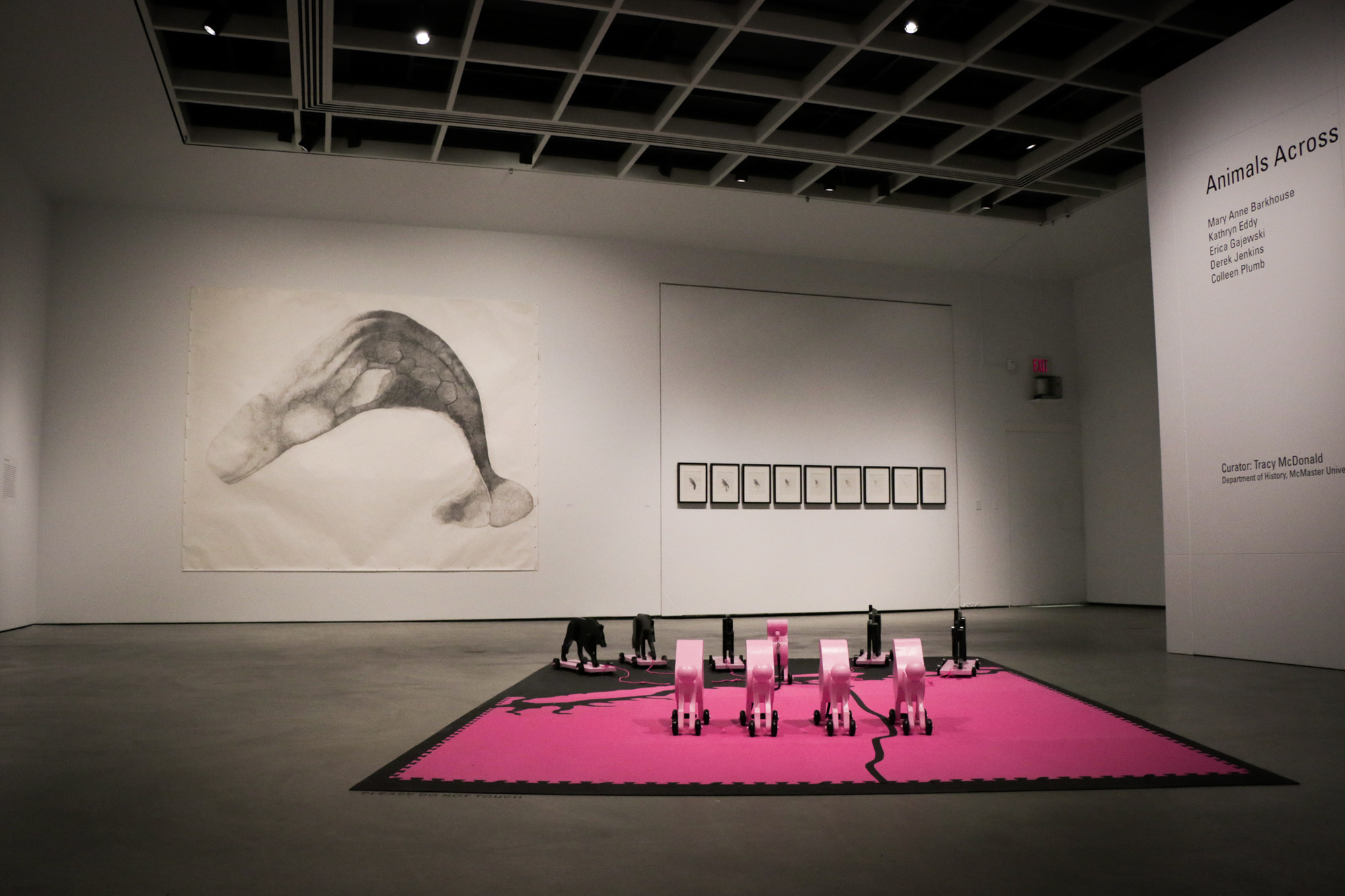
Animals Across Discipline, Time, and Space, abbreviated as AADTS, is an interdisciplinary art exhibit primarily about the relationship between humans and non-human animals. The exhibit explores the connection between the notion that humans are superior beings – sometimes referred to as anthropocentrism – and the human-created problems of the 21st century.
In the early days of the exhibit, I interviewed the curator, Dr. Tracy McDonald, on MorningFile. Dr. McDonald is a history professor who specializes in Russian and Soviet history, with a research interest in animal and agrarian studies. Our conversation included how her academic background connects to AADTS, her experiences working on this project as a first-time curator, and her thoughts on various works included in the exhibit.
A major point of discussion was also the “animal-human empathy gap”, and the ongoing question of whether it is possible to bridge that gap. Dr. McDonald explained that this concept was central to her curation process.
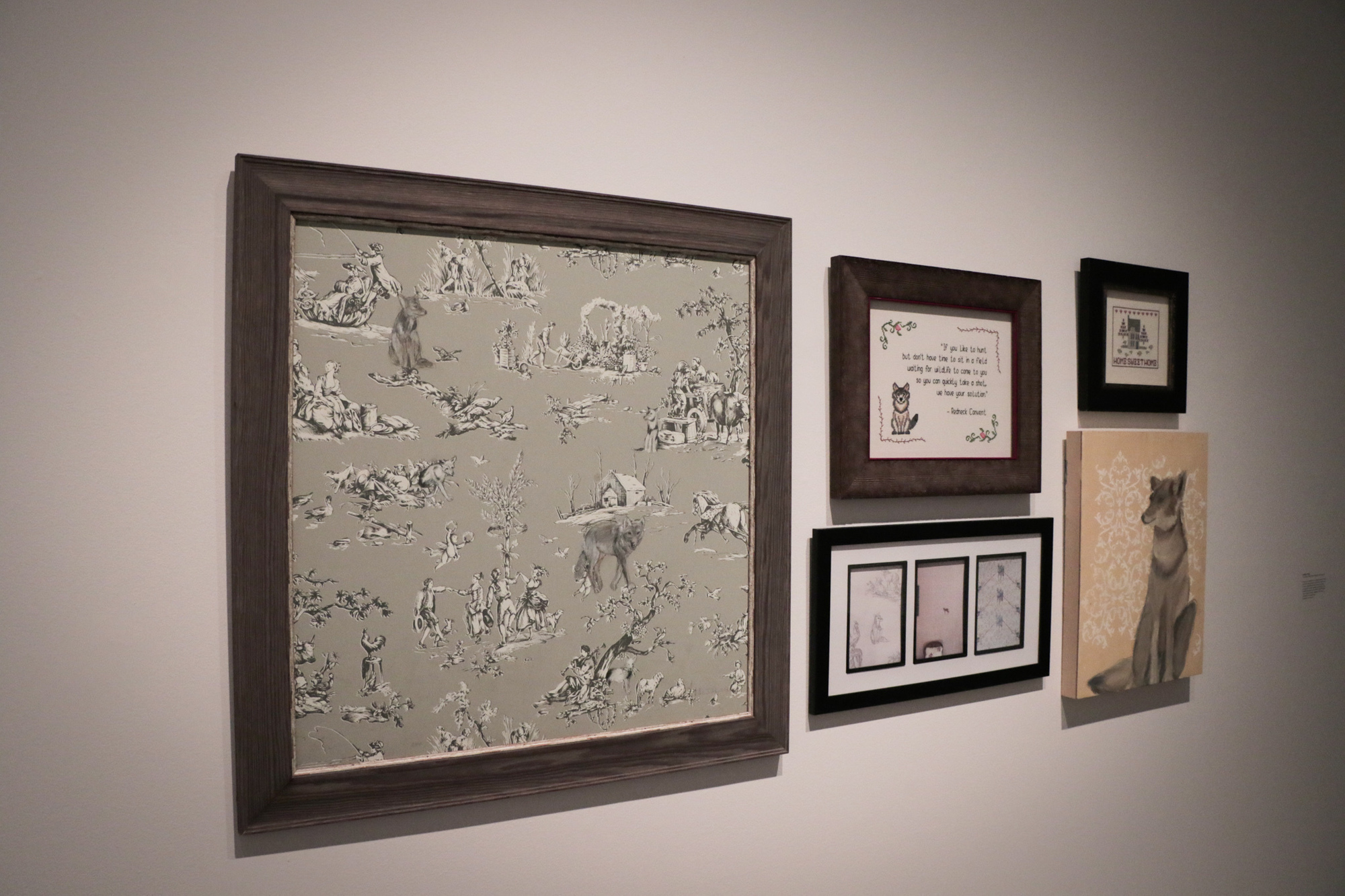
“Some of the arguments against empathy claim that you can only empathize with beings that are like you and that it’s restrictive, and I disagree. I think real empathy…can empathize with beings that are absolutely not like you,” she explained.
LISTEN: Interview with Dr. Tracy McDonald, curator of AADTS
One of the most unique things about this exhibit is that each of the five different artists featured work in different mediums. Mary Anne Barkhouse is a sculptor and jeweller belonging to the Nimpkish band of the Kwakiutl First Nation. Her sculptures could be found both on the outside of the museum and in the centre of the exhibit’s main room.
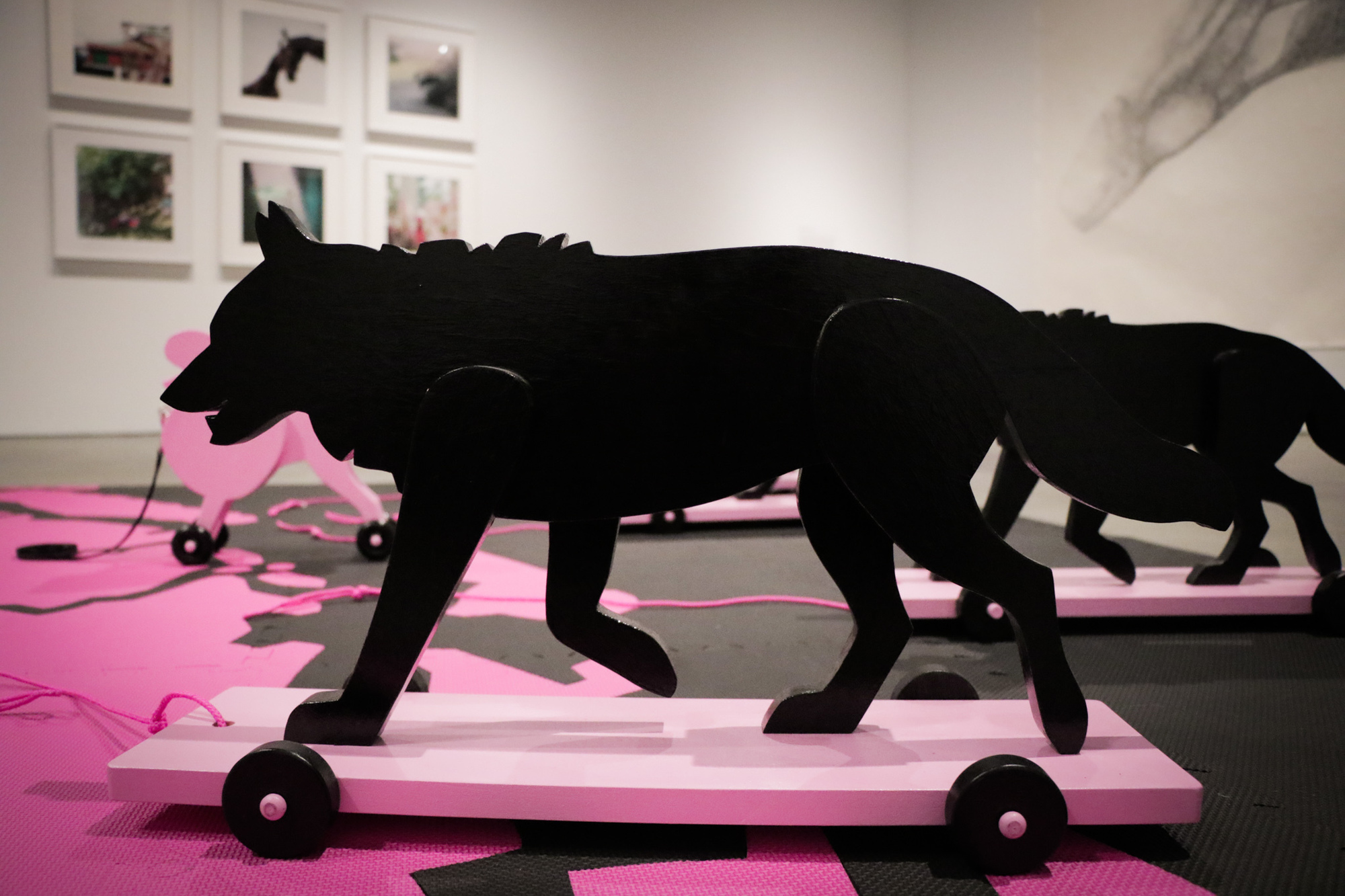
The central installation, Red Rover, is a study in animal domestication and contrasts wild wolves with their domesticated canine relatives, poodles.
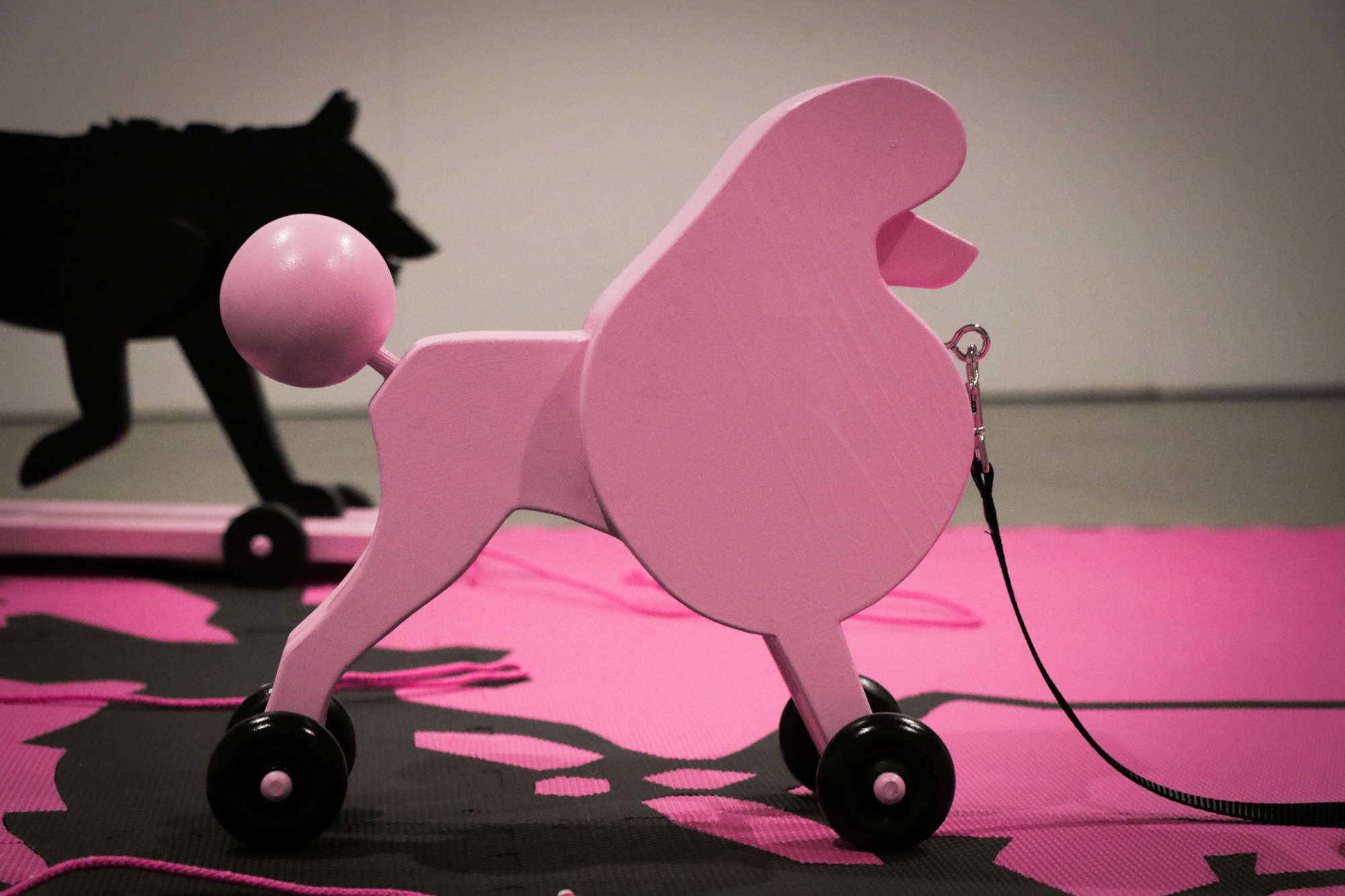
One side room of the exhibit housed an interactive installation by American artist and eco-feminist Kathryn Eddy.
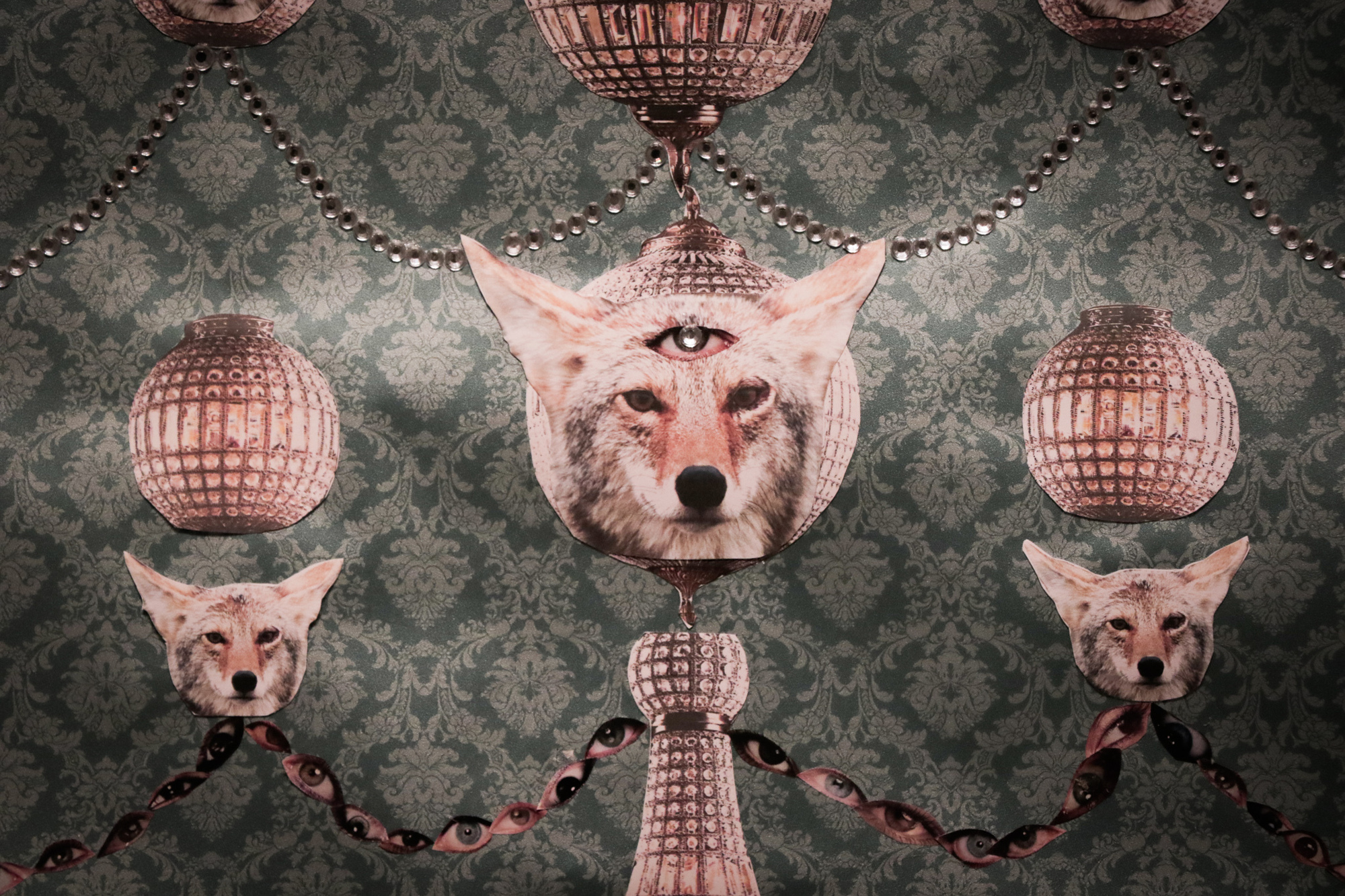
The installation, titled the Urban Wild Coyote Project, uses a combination of immersive sound, visual art, and sculpture to explore the simultaneous commodification and vilification of wild coyote populations.
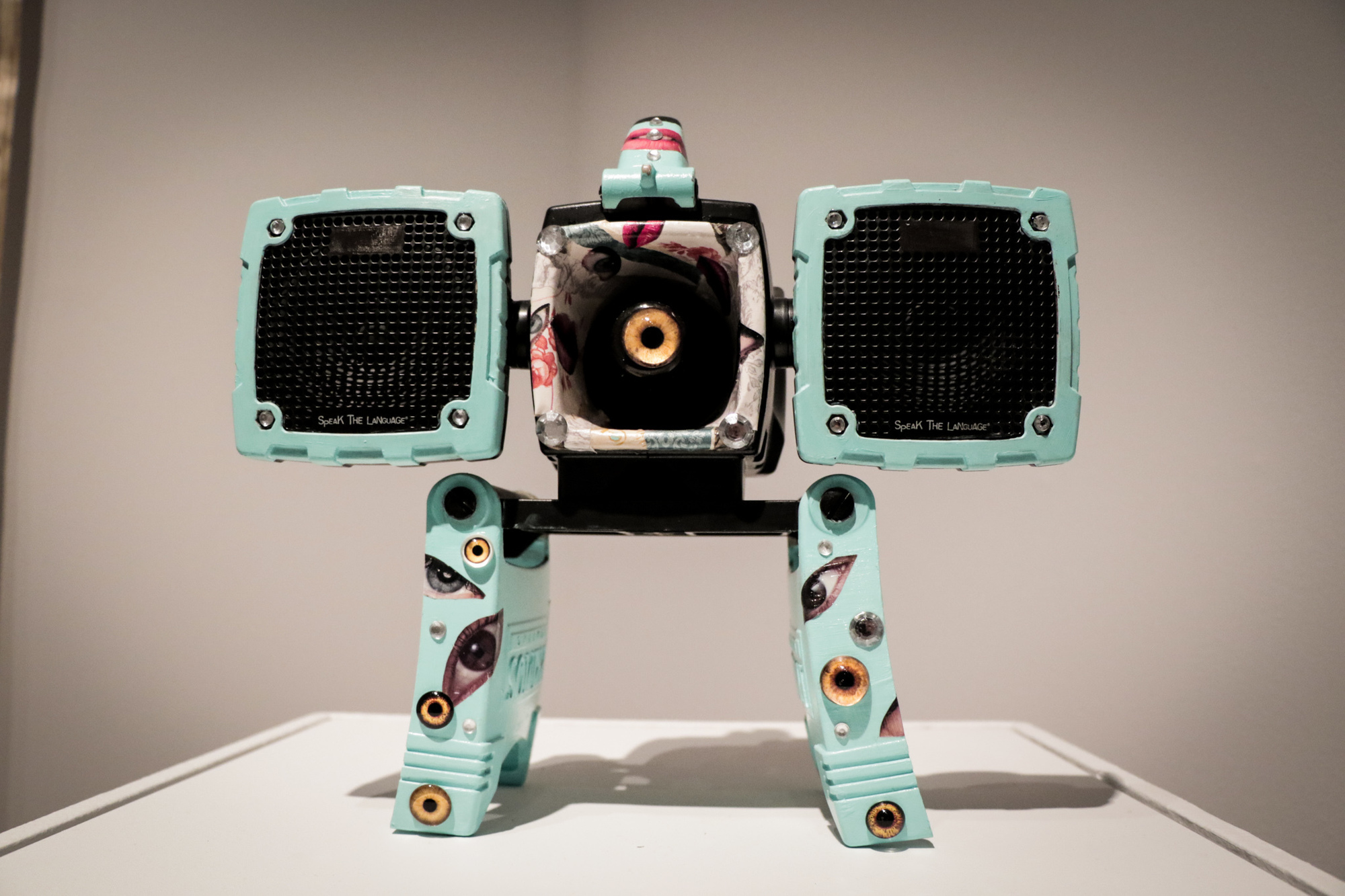
I think real empathy…can empathize with beings that are absolutely not like you.
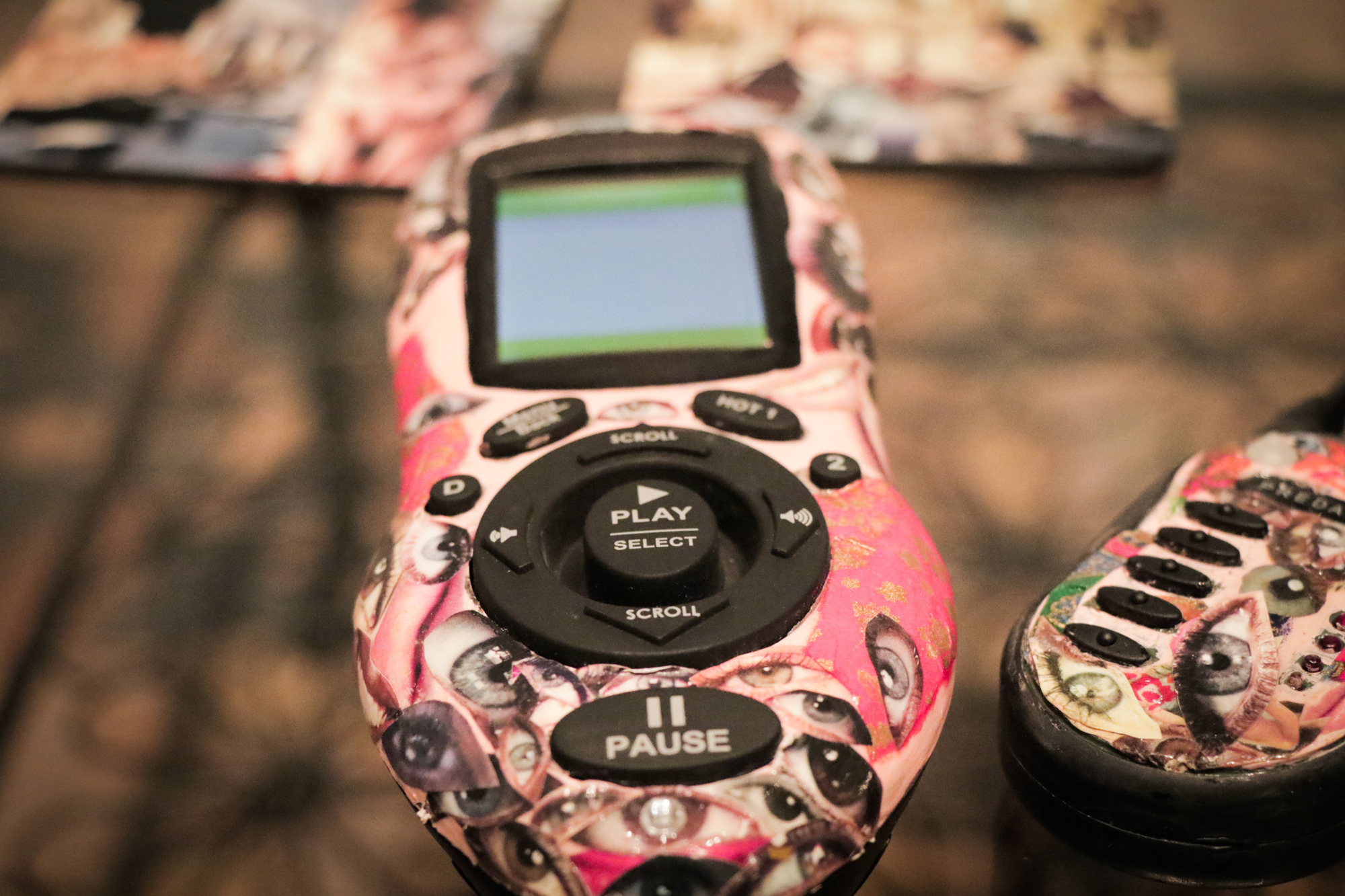
The drawings of Canadian artist Erica Gajewski were displayed on the walls of the main room.

This included Mercury, Water, PCB, DDT, a life-size art piece and commentary on how Beluga whales inhabiting the St. Lawrence River estuary are exposed to toxic waste due to pollution.
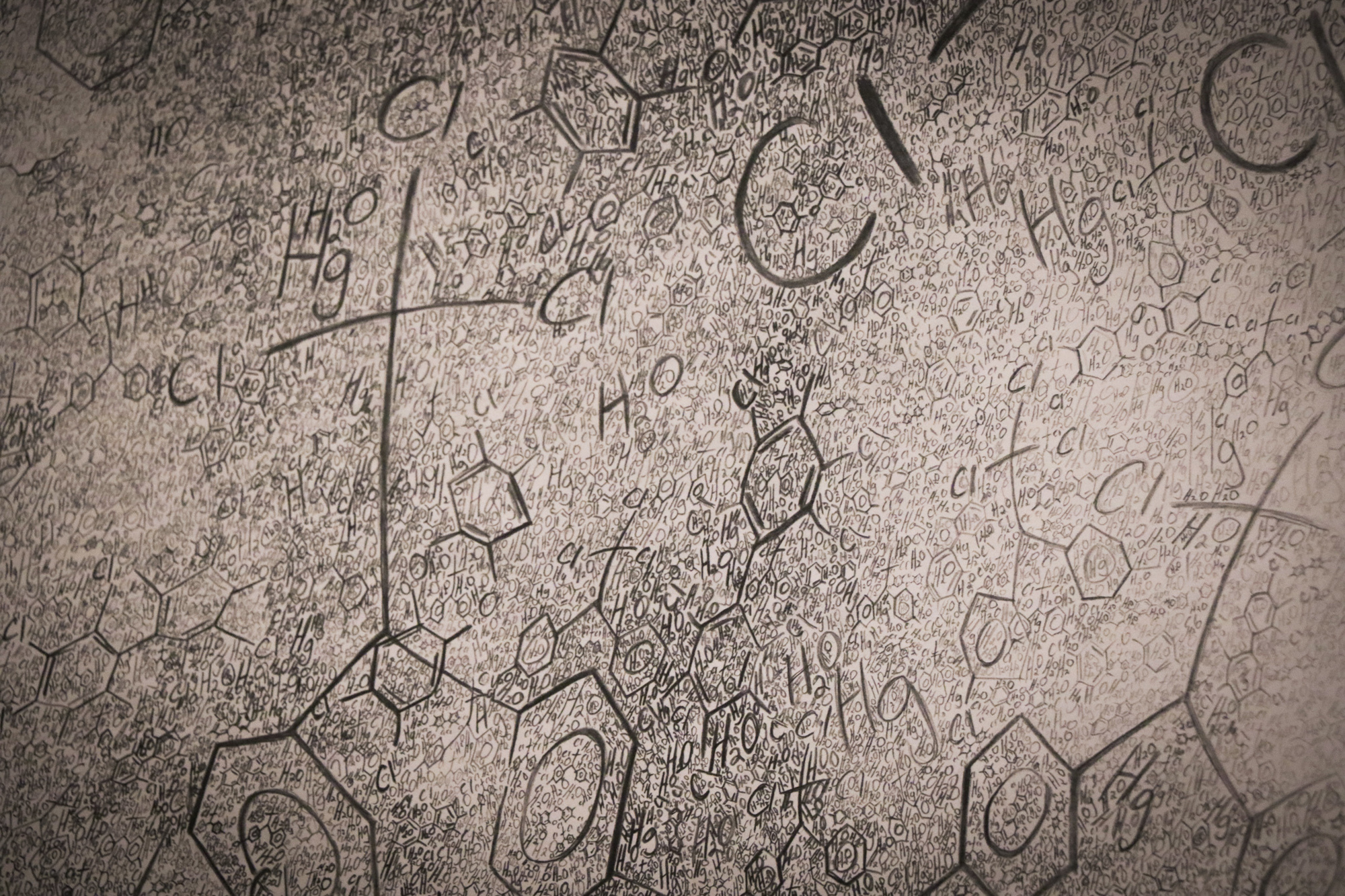
Selected works by American photographer and video artist Colleen Plumb from her series Animals Are Outside Today were also displayed in the main room.

This series examines the contradictions in the fact that humans admire and care for non-human animals while simultaneously caging and consuming them. This project is also available as a book.
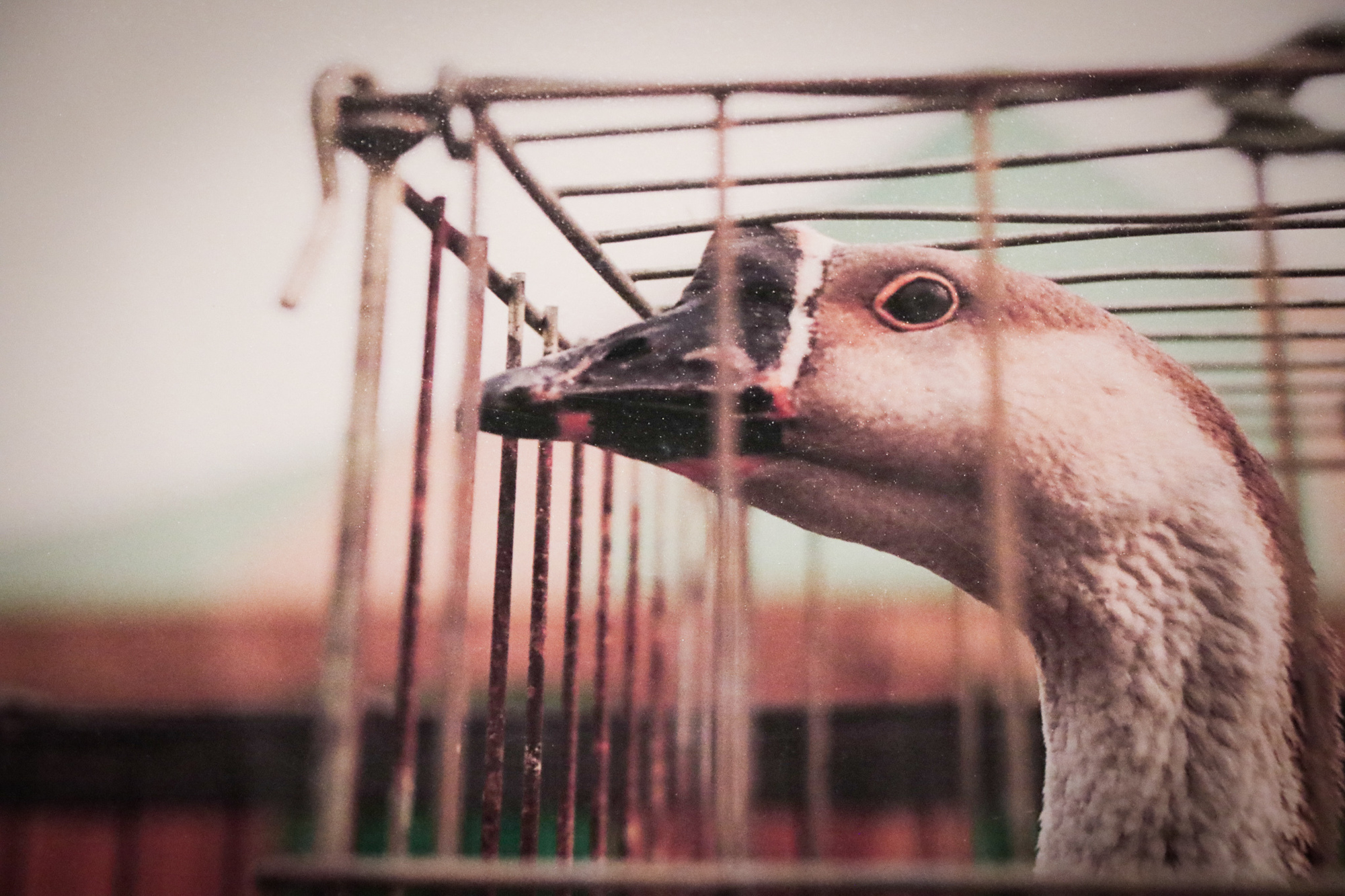
In a small, dark room off the main area, the video installation “Livestock” by Hamilton-based artist Derek Jenkins was displayed via projector. This experimental documentary focuses on the sale of cattle for industrial meat production and particularly the use of cattle bones to create gelatin, which is part of the film production process.
The exhibition period was slated to end with a three-day interactive gathering at the museum from March 19th to the 21st, featuring contributions by not only the artists, but also activists, scholars, and performers within the community. Unfortunately, this was cancelled due to COVID-19, but there is good news! The talk has been tentatively rescheduled for November 4th to 8th, 2020, at McMaster.
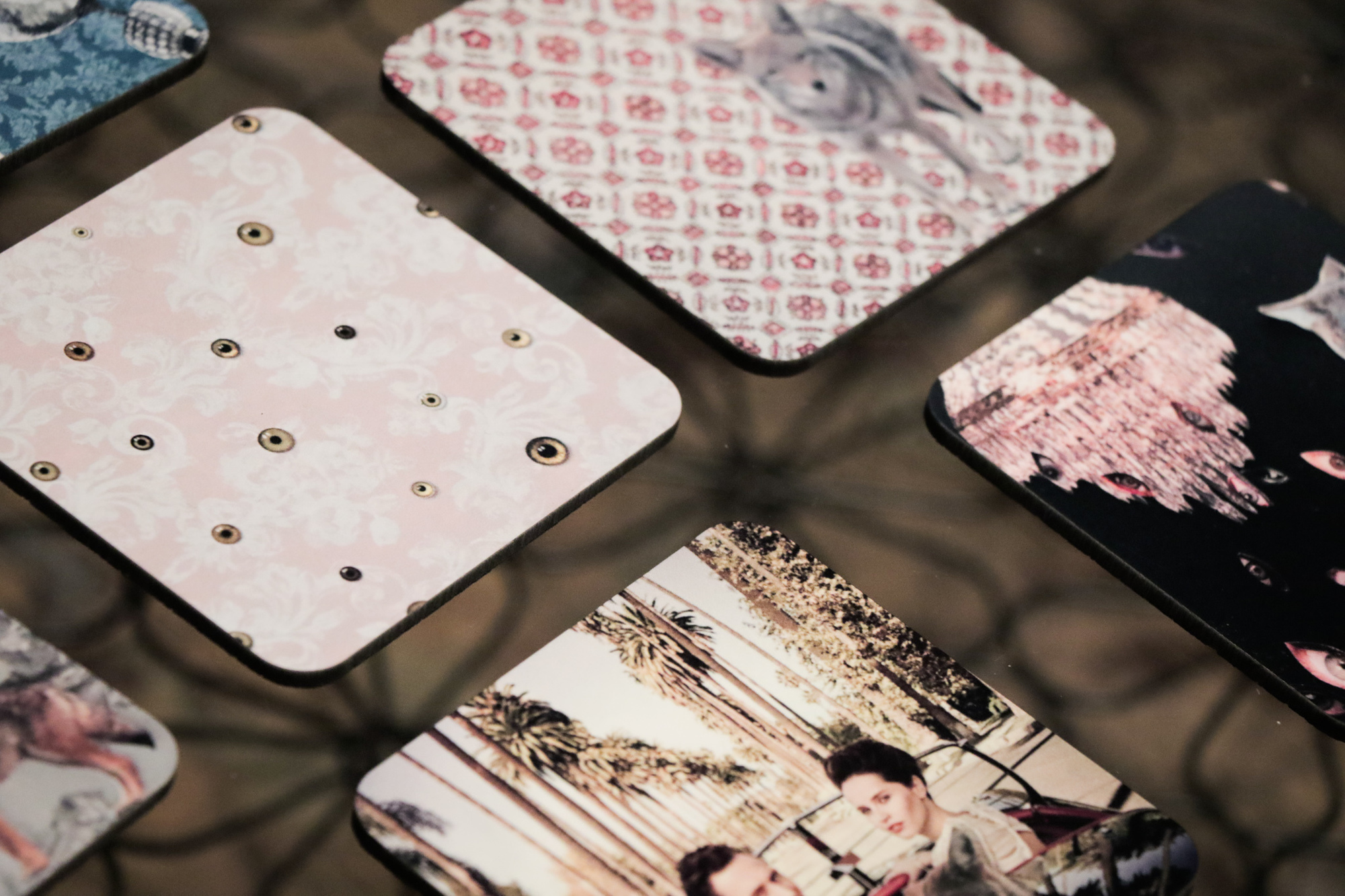
In the meantime, many components of the exhibit remain available online. Derek Jenkins’ Artist Talk, which provides an in-depth look into the conceptual background of “Livestock”, is available online, as is the film itself. The artists’ websites also feature several examples of their work, including pieces included in AADTS.
Getting to know Dr. McDonald and the exhibit she curated was a very interesting experience. Those attending the Fall 2020 gathering doubtlessly have an equally memorable few days to look forward to!
Olivia Fava is a 2019 McMaster linguistics graduate, the current Community Outreach Coordinator at CFMU, and the host of MorningFile. Contact her through email at cfmucom@msu.mcmaster.ca.
